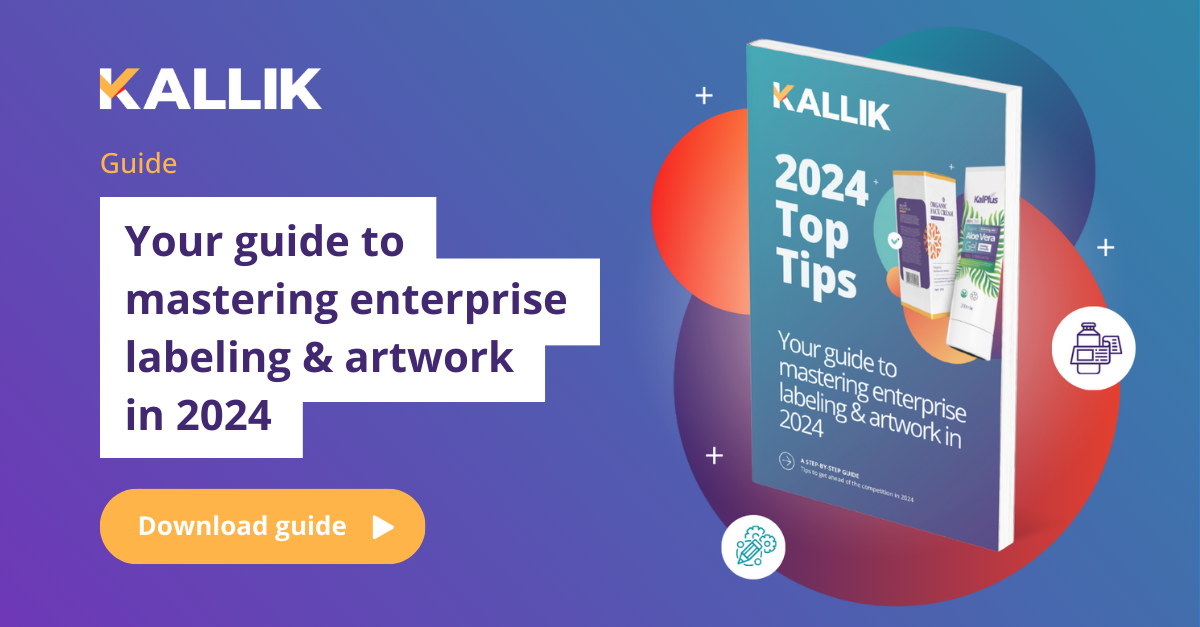Empowering Women in Tech: Insights from Kallik on IWD 2024
As we celebrate International Women's Day 2024 (IWD), we are reminded of the importance of showcasing women in tech and inspiring the next generation of female leaders. The theme this year for IWD is ‘Invest in Women: Accelerate Progress’, so what better topic to focus on than investing in women in the tech industry and accelerating the progress of equality in the industry?
Our CEO, Gurdip Singh, shares his thoughts on the significance of IWD and our commitment to empowering women in the industry: "IWD serves as a powerful platform for highlighting the contributions of women in tech and encouraging a new generation of female talent. At Kallik, we are proud to support and celebrate women in the workplace, and we are committed to creating a more inclusive and diverse environment for all. We believe that diversity is not just a goal—it's a necessity for driving innovation and creating a better future for all."
In today's rapidly evolving technological landscape, the importance of diversity in the workplace cannot be overstated. As the digital world continues to expand and influence every aspect of our lives, it's crucial that the teams creating these technologies reflect the diverse perspectives and experiences of the global population. However, studies show that we still have a long way to go in achieving gender equality in the tech industry.
The statistics speak for themselves
According to a survey conducted last year by Women in Tech UK, women currently account for only 26% of people working in IT. While this figure has improved from 19% in 2019, there is still much work to be done to achieve gender balance. The survey also found that 76% of respondents have experienced gender bias or discrimination in the workplace at least once. This is a stark reminder of the challenges that women face in the tech industry, and it underscores the need for concerted efforts to address these issues.
Lashay Freeman, Presales Consultant at Kallik, responded to these figures: “The figures are quite low but it isn’t a shock to me as I understand that certain industries are male dominated and often men will be selected over women for certain opportunities. This being said, the figures shouldn’t put women off going for these kinds of careers. There is nothing stopping a woman from being successful in IT as we can do the roles just as well as men. Don’t be put off by male dominated scenes. I think it’s nice seeing that women are doing more and being considered for more opportunities that we wouldn’t be able to before. I like seeing women having successful careers.”
Why representation matters
One of the key ways to improve gender diversity in tech is by promoting and supporting women already in the industry. Just as Lashay says, it’s always great to see ourselves represented. By giving a voice and a platform to the women already working in tech, we can provide positive representation for future generations who may be wondering where to take their career or thinking that the industry isn’t for them.
For example, did you know that the world’s first computer programmer was a woman? That’s right, Ada Lovelace is known as the world’s first computer programmer and it was her notes that Alan Turing used as a form of inspiration for his work on the first modern computer in the 1940s! And the person who invented the WiFi that you’re probably using to read this blog right now? Also a woman - Hedy Lamarr. And if you’ve ever watched the film Hidden Figures, you’ll know the incredible part that three women (Mary Jackson, Dorothy Vaughan, Katherine Goble Johnson) played in getting us into space, against all the racial and gender discrimination they faced. With more representation and more work to highlight the work women do in tech, we can encourage more women to consider a career in the industry.
At Kallik, we believe in providing equal opportunities for all employees, regardless of gender. Our Customer Success Manager, Heidi, shares her perspective: "Don't be put off a career in IT by preconceptions. There’s a role for everyone regardless of gender, race, or age. Perhaps I have been fortunate in working for some extremely supportive employers, but I have found it to be a friendly, dynamic and exciting sector, where women are both valued and encouraged to succeed."
It starts with equality in education
In addition to promoting gender diversity within our own organization, it’s also crucial to recognize the importance of encouraging more women to pursue careers in tech from a young age.
Aysha Ali, an Application Support Engineer at Kallik, emphasizes the need to introduce coding and other tech-related subjects to girls at a young age. "Encourage interest in STEM fields through programs, workshops, and extracurricular activities," Aysha suggests. By providing early exposure to technology and fostering a supportive learning environment, we can help empower the next generation of female technologists.
The importance of offering opportunities targeted at women
Furthermore, Aysha explains, “Internships and apprenticeships specifically targeted at women are important in providing hands-on experience and exposure to real-world tech environments.” As suggested by Women in Tech, the most popular way businesses are trying to increase their gender diversity are by promoting women in tech roles and recruiting more women - it’s crucial that women are directly targeted in order to achieve true equality.
 You don’t always need to be technical to work in tech!
You don’t always need to be technical to work in tech!
Beth Peckover, Chief Delivery Officer at Kallik, emphasizes the importance of recognizing the diverse range of roles available within the tech industry, both technical and non-technical. “I think one of the big issues is that young girls thinking about their future career don't see working in tech as something that appeals to them, and that only people who can code or know the ins and outs of computing can work in this space, which absolutely isn't the case,” Beth said.
Equally, Trupti Pradhan, VP Quality at Kallik, talks about the need to emphasise all careers available in the IT world: "I would advise all young women, to take a set back, rethink on where they want to be? Re-think about their current career growth, earnings, how competent they are and develop their skills in such a niche industry, there are tremendous options available just by doing some research and breaking the stereotypes. Seeking an early education about the different areas of the IT world, when they step in, would just make the future path easy and maintain balance in the education and work experience. I truly believe we have an immense power, strength and decision making ability, just matter of using it at the right place and at the right time."
There really are a wide range of roles available in technology, there is something for everyone and with proper education about the opportunities available, we could see far more women considering a career in tech.
Don’t underestimate the value in networking
Other key factors are mentorship and networking opportunities, as these play a crucial role in supporting women throughout their careers in tech. Aysha highlights the importance of connecting with other women in the industry: "Networking can open up opportunities and provide valuable guidance." At Kallik, we encourage employees to participate in mentorship programs and engage with professional networks to support their career development.
A healthy work-life balance can be more important to women
Although creating a healthy work-life balance through offering flexible and remote working can help everyone across the business, this can be particularly beneficial to women. Aysha says, “Discussions about achieving a healthy work-life balance are important for women in tech, especially considering the demanding nature of the industry. Strategies for managing career aspirations, family responsibilities, and personal well-being should be openly discussed and supported.” The survey conducted by Women in Tech UK found that 63% of women place flexible working in their top three benefits which would attract them to a job, followed by remote working and training within a company.
Trupti adds to this, discussing the fear and biases around women prioritising their career and the difficulties of balancing their personal and professional lives. "There is humongous potential for females to grow and plan their career here and in order to do this, we definitely need to groom and develop our professional skills and competencies. Currently I see, our focus is more aligned and directed to the priorities, be it a mum, or daughter or a partner. There is also a fear factor or a biases in the decision making ability while choosing a career path. Therefore it becomes very challenging for us to balance professional and personal developments. IT needs continuous upskilling and developing our knowledge base. As technology grows we equally have to upgrade in order to be competent in industry," Trupti explains.
Lift up your fellow female colleagues
Whether you’re just starting out in your career or you’re 40 years in, we all need a little extra support and some words of encouragement from time to time, regardless of gender. That being said, with women being far more likely to experience gender discrimination in the workplace, it’s important that we have each other’s backs and support each other.
Heidi says, “We grow by lifting others in work as in all walks of life. I have worked with and for many amazing women - my colleagues at Kallik are no exception. Not forgetting all the male colleagues who champion women in the workplace too. There are many!”
Let’s talk about empowering women in other industries too
 As part of our efforts to champion diversity and inclusion, Kallik is sponsoring England's rising cricket sensation, Sophie Ecclestone. The decision to sponsor a female athlete in a historically male-dominated sport underscores Kallik's dedication to diversity and our commitment to supporting women in all fields. Gurdip Singh explains the connection between Kallik and Sophie: "Our sponsorship of Sophie reflects our commitment to diversity. Just like the tech industry, sport is another area where women often feel unsupported and underrepresented with far less opportunities than their male equivalents. Therefore, we think it’s fundamental to support women in the field, just as we do with women in our own industry."
As part of our efforts to champion diversity and inclusion, Kallik is sponsoring England's rising cricket sensation, Sophie Ecclestone. The decision to sponsor a female athlete in a historically male-dominated sport underscores Kallik's dedication to diversity and our commitment to supporting women in all fields. Gurdip Singh explains the connection between Kallik and Sophie: "Our sponsorship of Sophie reflects our commitment to diversity. Just like the tech industry, sport is another area where women often feel unsupported and underrepresented with far less opportunities than their male equivalents. Therefore, we think it’s fundamental to support women in the field, just as we do with women in our own industry."
Sophie expresses her excitement about the partnership: "I am delighted to align with a market-leading brand that champions a strong company culture supporting and celebrating women in the workplace. I look forward to working with Gurdip and the Kallik team on some exciting initiatives throughout the partnership."
Diversity is not just a buzzword
Diversity is not just a buzzword—it's a fundamental aspect of building innovative and inclusive technology. Achieving gender diversity in the tech industry requires a multifaceted approach that addresses both systemic barriers and cultural biases.
At Kallik, we believe in promoting and supporting women in tech through initiatives such as mentorship programs, early exposure to technology, and flexible working arrangements. By providing equal opportunities for all employees, regardless of gender, and celebrating the contributions of women in the workplace, we can create a more inclusive and diverse environment for everyone.
As we celebrate International Women's Day and reflect on the progress made, let us continue to work towards a future where gender equality is the norm, both in the tech industry and beyond. Together, we can create a world where diversity is celebrated, and every individual has the opportunity to thrive.
Some words of wisdom for the future generation
Finally, we wanted to conclude this piece with some words of wisdom for young women who may be starting out in the tech industry, may be considering whether a job in tech is right for them, or may be feeling overwhelmed and wondering where to go with their career. Here is some advice from just a handful of the wonderful women across the Kallik Team:
Beth Peckover, Chief Delivery Officer: "For those that have decided to pursue a career in IT, this would be my advice: Apply for the job even if you don't tick all the boxes. Statistically, men apply for jobs where they meet only 60% of the qualifications, while women often hesitate unless they feel fully qualified. Instead of focusing solely on the qualifications you lack, highlight the skills, experiences, and strengths you do possess. Remember, employers often value potential and attitude just as much as they do specific experience.
“Scary is good. You need to push yourself out of your comfort zone in order to grow and develop, and if you feel you are just coasting in your current role, it's time to look for something new which will challenge you.
“Find your champion. I have been fortunate in my career to work with people who wanted to help me to progress and gave me advice and opportunities to do so. Work hard, be kind, help others to succeed and you'll find you get the same in return.”
Lashay Freeman, Presales Consultant: "The low figures shouldn’t put women off going for these kind of careers. If you truly are fascinated and interested in something you should go for it regardless. There is nothing stopping a woman from being successful in IT as we can do the roles just as well as men. Don’t be put off by male dominated scenes. I think it’s nice seeing that women are doing more and being considered for more opportunities that we wouldn’t be able to before. I like seeing women having successful careers.”
Heidi Evans, Customer Success Manager: "Don't be put off a career in IT by preconceptions. There is a role for everyone regardless of gender, race or age - whether you are analytical, creative, a team player, a problem solver - a coding genius or a people person.”
Aysha Ali, Application Support Engineer: "Having confidence is key. Believe in yourself and your abilities.
“Technology is always evolving - stay curious and keep on learning as it is important to keep up with trends and latest technologies.
“Connect with other women in tech via linkedin. Networking can open up opportunities and provide valuable guidance.
“Lead by example! As you progress in your career, inspire and mentor other young women who are aspiring to enter the tech industry. Your journey can be a source of encouragement for others.”
Trupti Pradhan, VP Quality: "I would advise all young women, to take a set back, rethink on where they want to be? Re-think about their current career growth, earnings, how competent they are and develop their skills in such a niche industry, there are tremendous options available just by doing some research and breaking the stereotypes. Seeking an early education about the different areas of the IT world, when they step in, would just make the future path easy and maintain balance in the education and work experience. I truly believe we have an immense power, strength and decision making ability, just matter of using it at the right place and at the right time."


